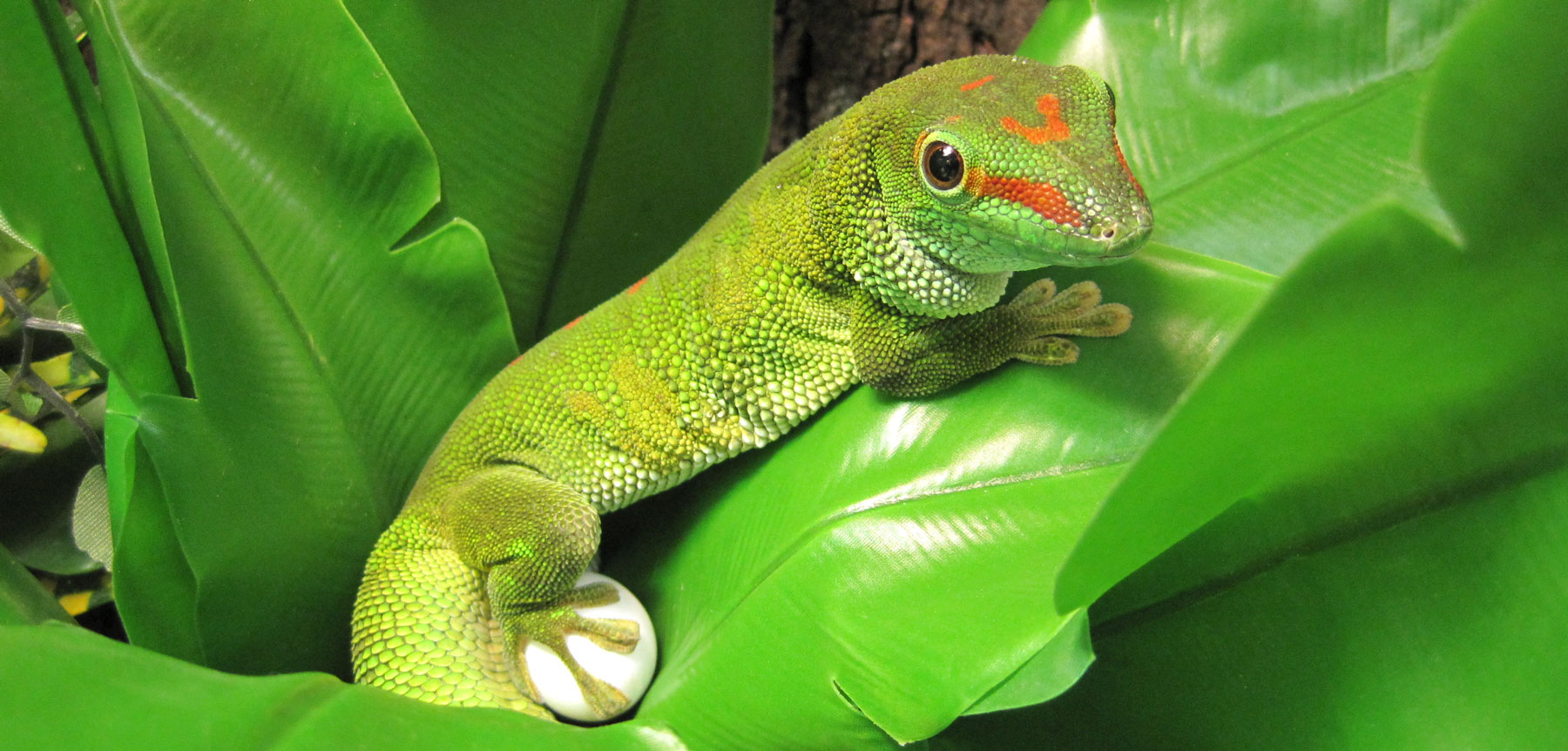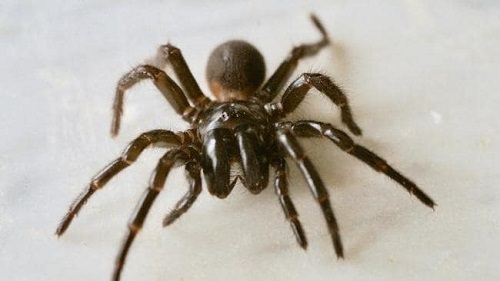What Do Day Geckos Eat
Day geckos are small lizards that are native to Madagascar. They are one of the most popular pets in the world due to their docile nature and vibrant colors. Day geckos are insectivores, meaning they primarily eat insects.
In the wild, day geckos will eat any type of insect they can find, including flies, beetles, moths, and crickets. Many pet owners choose to feed their day gecko commercially prepared meals that contain a mix of insects and vegetables. These meals are nutritionally complete and provide everything your day gecko needs to stay healthy.
Giant Day gecko feeding
Do you ever wonder what those little day geckos running around your house are eating? Well, they primarily eat insects and other small invertebrates. This includes things like crickets, flies, spiders, and even other geckos!
They will also occasionally eat fruit or nectar. In the wild, their diet can vary depending on what insects are available. But in captivity, it is important to give them a varied diet to make sure they are getting all the nutrients they need.
One way to do this is to feed them a variety of live insects. You can buy crickets and other insects at most pet stores. Another option is to grow your own food for them using a simple setup at home.
This can be especially rewarding as you watch your geckos grow and thrive on the food you provide!
Whatever route you choose, make sure the insects you feed your geckos are appropriately sized. Baby geckos should only be given very small insects such as fruit flies.
Adult geckos can handle larger prey items such as adult crickets or mealworms.
A healthy diet is important for any animal, and day geckos are no exception! By providing them with a variety of foods, you can ensure that your pet gecko will lead a long and happy life.
How Long Do Day Geckos Live
If you’re considering getting a day gecko as a pet, you may be wondering how long they live. The answer depends on several factors, including the species of gecko and their living conditions. In general, however, most day geckos have a lifespan of 5 to 10 years.
There are over 1,000 different species of gecko, so there is quite a bit of variation in size, color, and behavior. Day geckos are typically small, with adults reaching lengths of 4-6 inches from head to tail. They are native to warm climates like Madagascar and Australia, and prefer to live in humid environments.
In the wild, day geckos face many predators and challenges that can shorten their lifespan. However, if they are well cared for in captivity they can enjoy a long life span. The key to keeping your day gecko healthy is providing them with the proper diet and housing conditions.
Day geckos are insectivores and require a diet high in protein. Their enclosure should be large enough for them to climb and explore, and it should be kept at a temperature between 75-85 degrees Fahrenheit during the day (with a basking spot that reaches 95 degrees). At night, the temperature should be allowed to drop down to 65-75 degrees.
As long as you provide your day gecko with proper care throughout its life, you can expect it to stick around for 5-10 years or more!
What Do Giant Day Geckos Eat
Giant day geckos are unique lizards that are found in the forests of Madagascar. They are one of the largest species of gecko, and can grow up to 12 inches in length. Giant day geckos are carnivorous, and their diet consists primarily of insects and other small invertebrates.
They will also occasionally eat fruit or nectar. In captivity, giant day geckos can be fed a variety of commercially available reptile foods, as well as live insects.
Day Gecko Price
Assuming you would like a blog post about the cost of day geckos:
If you’re considering purchasing a day gecko, you may be wondering how much they cost. Prices for day geckos can vary depending on the specific species and where you purchase them from.
Generally speaking, however, most day geckos will cost between $30 and $80.
Of course, the price is not the only factor to consider when deciding whether or not to buy a day gecko. You’ll also need to think about the costs of food and housing for your new pet.
Day geckos are native to warm climates and require special care to ensure they stay healthy. If you live in an area with cold winters, you’ll need to provide your day gecko with an artificial heat source so they can remain comfortable throughout the year. All of this should be taken into consideration before making your final decision.
Where Do Day Geckos Live
If you’re looking for a pet that is small, colorful, and relatively easy to care for, you may be interested in keeping a day gecko. But before bringing home your new reptilian friend, it’s important to know a little bit about where they come from and what their natural habitat looks like.
Native to Madagascar, day geckos are most commonly found living in the island’s rainforests.
Here, they make their homes in trees and bushes, often near sources of water. These lizards are good climbers and spend much of their time high off the ground where they can escape predators.
While they are adapted to life in warm tropical climates, day geckos can also be found in other parts of the world including parts of Asia, Australia, and even some Pacific islands.
In these locations, they typically inhabit areas with similar climates to their native Madagascar – hot and humid with plenty of vegetation.
As pets, day geckos do best when kept in enclosure that mimics their natural habitat as closely as possible. This means providing them with plenty of places to climb, hiding spots, and a consistent temperature around 80 degrees Fahrenheit.
If you can provide your day gecko with an environment that makes them feel comfortable and safe, you’ll have a happy pet that will stick around for years to come!
Giant Day Gecko Lifespan
The Giant Day Gecko is a member of the genus Phelsuma and is one of the largest species of day gecko. It is endemic to Madagascar and can be found in the northern, central and eastern regions of the island. The Giant Day Gecko grows to an average length of 20-24 cm (8-9.5 inches), with some individual specimens reaching up to 30 cm (12 inches).
The lifespan of a Giant Day Gecko in captivity is typically 10-15 years, although some have been known to live for 20 years or more.
In the wild, Giant Day Geckos are typically found in forests, but can also be found in urban areas. They feed on insects and other small invertebrates, as well as nectar from flowers.
Breeding occurs throughout the year, with females laying 1-2 eggs per clutch. Incubation takes approximately 60 days and hatchlings are born fully independent.
If you’re looking for a large, colorful lizard companion, then the Giant Day Gecko may be perfect for you!
With a lifespan of 10-15 years (and sometimes even longer), these geckos make great pets that will provide you with many years of enjoyment.
Day Gecko Size
The day gecko is a small to medium sized lizard found in southern Asia. They are typically green or brown in color and have spots or stripes running down their backs. These lizards are most active during the daytime, hence their name.
They are known for their quick movements and ability to climb vertical surfaces.
Day geckos typically range in size from 6-8 inches long. However, some species can grow up to 12 inches in length.
These lizards weigh between 20-40 grams. Females tend to be slightly larger than males on average.
Day geckos are found in a variety of habitats including forests, grasslands, and even urban areas.
They prefer warm climates and can be found near water sources such as streams or ponds. These lizards eat insects and spiders which they catch with their long tongues.
Day geckos are relatively short lived creatures with a lifespan of only 5-7 years in captivity.
Day Gecko for Sale
If you’re looking for a unique and exotic pet, you may want to consider a day gecko. These lizards are native to Madagascar and can make interesting and low-maintenance pets. Here’s what you need to know if you’re considering adding a day gecko to your family.
Day geckos are small lizards that typically grow to be about 6-8 inches long. They have colorful bodies with patterns of spots, stripes, or swirls. These lizards are active during the day, hence their name, and they prefer warm weather.
If you live in an area with cold winters, you’ll need to provide your day gecko with an artificial heat source so they can stay warm enough.
Day geckos are insectivores and eat mostly crickets in the wild. In captivity, they can be fed a diet of commercially available cricket food or live crickets dusted with calcium powder.
It’s important to offer your day gecko plenty of food because they have high metabolisms and burn through energy quickly. You should also provide them with a water dish for drinking and bathing.
Day geckos are generally social creatures that do well in pairs or groups.
However, there is potential for aggression between males, so it’s best to house them separately unless you’re sure they get along well together.
Giant Day Gecko Price
If you’re looking for a pet that’s both unique and exotic, you may be interested in the Giant Day Gecko. This lizard is native to Madagascar and can grow up to 18 inches long! While they may be a bit pricey, costing around $200-$300, they make great pets for those who are willing to care for them properly.
Here’s everything you need to know about Giant Day Geckos before making the commitment to purchase one.
Giant Day Geckos are omnivorous, meaning they eat both plants and animals. In the wild, their diet consists of insects, small mammals, and nectar from flowers.
When keeping them as pets, it’s important to replicate their natural diet as closely as possible. They should be offered live food like crickets or mealworms 2-3 times per week, along with daily servings of fresh fruits and vegetables. A calcium supplement should also be dusted on their live food occasionally to ensure proper nutrition.
Giant Day Geckos are arboreal creatures, meaning they spend most of their time in trees. They are excellent climbers and love to explore their surroundings, so it’s important to provide them with an enclosure that has plenty of vertical space. A 20-gallon aquarium is typically sufficient for one gecko, but larger enclosures will be necessary if you plan on housing multiple lizards together.
The enclosure should also include hiding spots (cork bark or hollowed logs work well), branches for climbing, and a shallow dish of water for bathing/drinking purposes.
Daytime temperatures inside the enclosure should range from 75-85 degrees Fahrenheit, with a basking spot that reaches 90 degrees Fahrenheit. At night, the temperature can drop down to 70 degrees Fahrenheit without issue.
UltravioletB lighting is also necessary since Giant Day Geckos cannot produce vitamin D3 on their own; this can be provided via a special reptile bulb or by placing the enclosure near a sunny window (with screen protection).
Proper humidity levels are crucial for Giant Day Geckos since they come from a tropical environment. The air inside their enclosure should remain between 50-70% humidity at all times; this can be achieved by misting the cage 1-2 times per day and using humidifiers as needed (especially during drier winter months).
/day-geckos-as-pets-1236908-hero-eac0bb91e96548c18066fd58bbb26772.jpg)
Credit: www.thesprucepets.com
What Fruits Can a Day Gecko Eat?
A day gecko is a type of lizard that is native to Madagascar. These lizards are also found in other parts of the world, including Hawaii, where they have been introduced. Day geckos are diurnal, meaning they are active during the day.
These lizards get their name from their habit of basking in the sun during the day.
Day geckos are omnivorous, meaning they will eat both plants and animals. In the wild, their diet consists mostly of insects.
However, in captivity, day geckos can be fed a variety of different foods, including fruits. Some good fruit options for day geckos include:
-Apples
-Bananas
-Grapes
-Melon
-Peaches
Do Day Geckos Need Bugs?
Most day geckos are insectivores, which means that their diet consists mostly of insects. However, there are some species of day gecko that are omnivorous, meaning they will also eat other things like fruits and vegetables. So do day geckos need bugs?
The answer is yes… for the most part.
If you have a pet day gecko, it’s important to give them a variety of different insects to eat. This will ensure that they get all the nutrients they need.
Some good options include crickets, mealworms, and waxworms. You can usually find these at your local pet store.
It’s also a good idea to offer your day gecko a few different types of fruit and vegetables as well.
While they may not eat as much of these as they do insects, it’s still important for them to get some variety in their diet. Some good options include mangoes, papayas, and squash.
So overall, yes – day geckos do need bugs as part of their diet.
But it’s also important to offer them other foods as well so that they can get all the nutrients they need to stay healthy!
Do Giant Day Geckos Need Live Food?
Giant day geckos are native to Madagascar and can grow up to 10 inches in length. They are one of the most popular pet lizards in the world and are known for their docile nature and vibrant colors. Giant day geckos are generally easy to care for, but they do have specific dietary needs that must be met in order to keep them healthy.
One of the main staples of a giant day gecko’s diet is live food. This can include crickets, mealworms, waxworms, and other small insects. Live food provides your gecko with essential nutrients that they would not otherwise get from a diet of only fruits and vegetables.
It is important to offer your gecko a variety oflive foods so that they can get a balanced diet.
While some people choose to feed their giant day geckos pre-packaged live foods, it is often more cost-effective (and healthier) to breed your own insects. This way you can be sure that your insects are free of pesticides and other harmful chemicals.
If you decide to breed your own live food, there are a few things you need to know in order to do it successfully.
The first thing you need is an appropriate breeding container. This should be large enough to hold all of the insects you plan on breeding as well as any resulting offspring.
The container should also have plenty of ventilation so that the insects can breathe properly.
How Do Day Geckos Drink?
Most lizards are able to drink by licking water off of their bodies. They have a long, forked tongue that they use to collect water and then bring it back into their mouths. Day geckos, however, do not drink in this way.
Instead, day geckos have what is called a “head-bobbing” method of drinking. They will dip their heads into water and then quickly jerk them back out again. This action causes water to be sucked up through their nostrils and into their mouths.
While this may seem like a strange way of drinking, it is actually very efficient for day geckos. Their head-bobbing method allows them to take in large amounts of water very quickly. It also helps them to avoid getting any water on their bodies, which would make them more susceptible to predators.
Conclusion
Day geckos are lizards that are native to Madagascar. They are also found in other parts of the world, including the United States. Day geckos are known for their brightly colored skin and their ability to climb walls.
Day geckos eat a variety of insects, including crickets, moths, and spiders. They will also eat other small lizards and amphibians.






